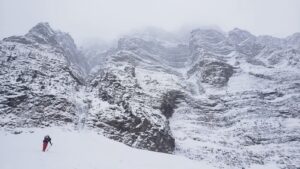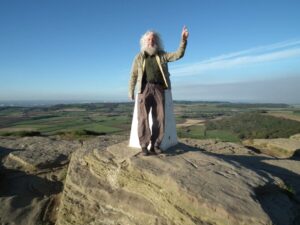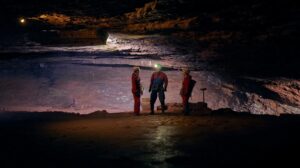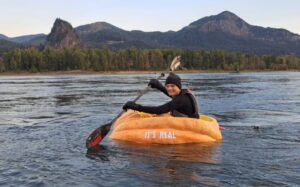In The Last Island: Discovery, Defiance, and the Most Elusive Tribe on Earth, author Adam Goodheart explains that this is the first full-length book published about North Sentinel Island. A tiny, jungle-covered dot in the Bay of Bengal, North Sentinel has “somehow managed to slip through the net of history.” But the island and its inhabitants are fascinating subjects. Why is there such limited literature?
The answer might be that writing a book about people we know almost nothing about is a pretty tricky proposition. Goodheart handles the task with aplomb, though anyone hoping for “answers” about the Sentinelese might come away a little disappointed.
A long, mysterious history
Most of the world only learned of North Sentinel’s existence in 2018, when a young American, driven by religious zeal, made repeated efforts to land on the island and convert the population to Christianity. John Allen Chau was eventually killed by the Sentinelese after his third landing. The fisherman who had transported him to the island spotted the natives dragging Chau’s body along the beach the next day.
But the recorded history of North Sentinel starts in 1296 with a remark from Marco Polo. He described the inhabitants as “a most brutish and savage race, having heads, eyes, and teeth like those of dogs.” Of course, Polo almost certainly never visited the island.
A passing East India Company vessel named the island in 1771. The crew saw lights and named it North Sentinel as it appeared to stand sentinel at the end of a broad strait. So why, despite its known position and evidence of life, did it manage to “slip through the net of history” over the next couple of hundred years? Hostility alone did not deter the world, and particularly the British, from pushing into (and usually claiming) new lands elsewhere.
Goodheart argues that the geography of the island is part of the reason. The island was too small and had no harbors. The coral reefs surrounding it both kept outsiders out and the Sentinelese in. It’s just far enough away from the other Andaman Islands to make travel difficult.

North Sentinel Island.
A cosmic fluke
Yet North Sentinel’s almost complete isolation still seems something of a cosmic fluke. The British first set up a penal colony in the Andaman Islands in the late 1700s. Eventually, they made a more permanent colony at Port Blair on Great Andaman in 1858.
The British studied the other Andaman island tribes extensively but were not impressed. They were particularly shocked that the tribes had not discovered fire.
“It is impossible to imagine any human beings to be lower in the scale of civilization,” a British official wrote in one scathing report.
Among these tribes, the Sentinalese were outliers amongst outliers. They were the only remaining “uncontacted” tribe with their own island and were reclusive even by the standards of their elusive neighbors. Goodheart launches into an interesting history of first British, and then Indian, interactions with the various Andaman tribes. It’s fascinating, if often disturbing stuff. There are well-meaning attempts at “civilizing” tribes, sexual assaults, kidnappings, numerous outbreaks of disease, and the occasional moment of beauty and shared humanity.
Heartbreaking
There are some heartbreaking passages: “In 2008, at least eight Onge men and boys — almost a tenth of the tribe’s remaining population — died after drinking the contents of a bottle that had washed up on the beach, which they believed to be an alcoholic beverage; it was actually a toxic chemical solvent.”
Needless to say, contact with the outside world does not prove beneficial for these indigenous groups.
Though North Sentinel’s recorded history is short (even compared with the region’s other tribes), there have likely been many unrecorded interactions between the Sentinelese and the rest of humanity. Goodheart suggests that some of these interactions could well have been far more impactful on the Sentinelese than anything we have recorded. These experiences, lost to the rest of the world, could have determined this remote tribe’s attitude toward contact.

Perhaps the first photo of the North Sentinelese. A still from the 1974 documentary Man in Search of Man. Photo: Man in Search of Man
Lots of questions but few answers
Goodheart weaves his personal history with the Andaman Islands and North Sentinel into the book, two trips taken many years apart. For some, this will prove a sideshow, but I enjoyed a more personal perspective and found passages that mirrored my own feelings toward travel, and the inexorable march of time: “My previous visit to the Andamans had felt like a journey. This one began to feel more and more like a trip. Are journeys even possible anymore, I wondered? Is it just my heart has grown older and less expansive since the last century ended, or has the whole world?”
As I wrote in a 2018 piece, Chau’s death raises difficult questions about privilege and responsibility within the exploration community. The (very natural) human desire to learn more about the Sentinelese is an ethical minefield too, and something that Goodheart does not shy away from. How different was his 1998 journey to catch a glimpse of the tribe from Chau’s 2018 attempt? How much does your motive for visiting members of the Andaman tribes matter?
There’s also a difficult juggling act to perform for Indian authorities. Should the North Sentinelese be given regular opportunities to join the outside world? Or should we leave them in complete isolation? Without knowledge of their worldview and reasons for hostility to outsiders, it’s impossible to know if they are actively choosing isolation or feel that the world has forced it upon them.
More than North Sentinel
This is not the book to read if you need a definitive answer to why the most elusive tribe on Earth remains hostile to the outside world. It’s not even really a book about North Sentinel. Rather, it’s a book of ruminations on the Andamans and “first contact.” It’s a book of questions, and if you’re happy to ponder these, it’s a riveting, thought-provoking read.
The island’s perfect isolation, unmoored from ordinary space and time, is our own self-consoling fantasy: as long as the Sentinelese remain, we can tell ourselves that our planet is still, to some tiny degree, inviolate. We see those islanders through vision as fogged with our own preoccupations as Colombus’s first glimpses of the Caribs.






